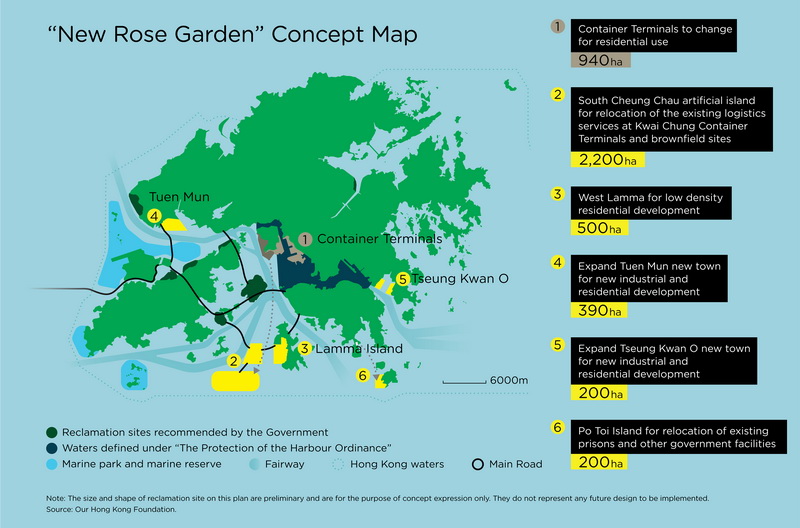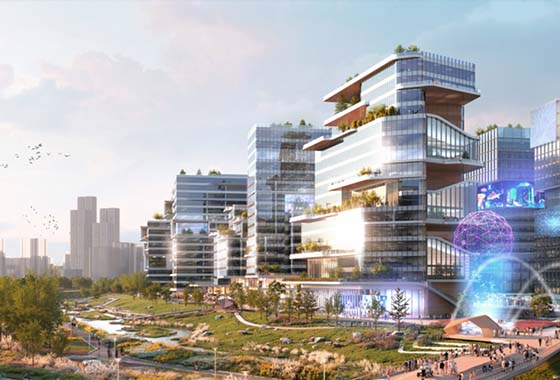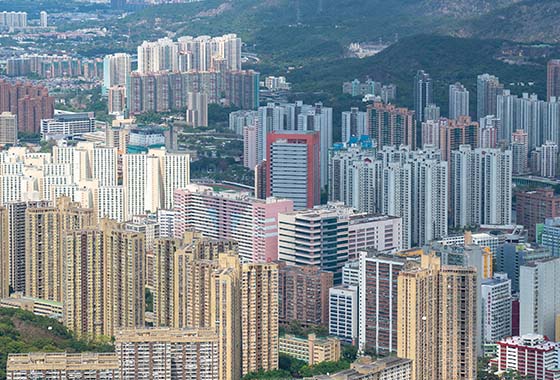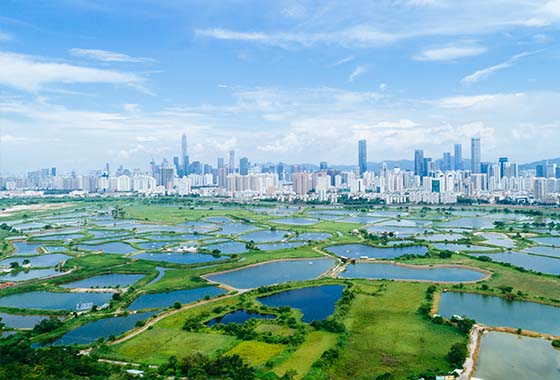Our Hong Kong Foundation Proposes Restarting Large-Scale Reclamation in Response to “Hong Kong 2030+”
Building an ideal home for the people of Hong Kong
HONG KONG, April 27, 2017 – Our Hong Kong Foundation (“OHKF”) today published an advocacy report titled “Restart Large-Scale Reclamation for an Ideal Home.” The report, tasked to respond to the “Hong Kong 2030+: Towards a Planning Vision and Strategy Transcending 2030” (“Hong Kong 2030+”) released by the Government, highlights the continued shortage of public and private housing in Hong Kong and the inadequacy of existing land development programmes in accommodating long-term needs. OHKF proposes that the government restarts large-scale reclamation plans in Hong Kong to support different development projects in the SAR, including releasing privately-owned land through a public-private cooperation model, to tackle the problem of land and housing in Hong Kong through a multi-pronged approach.
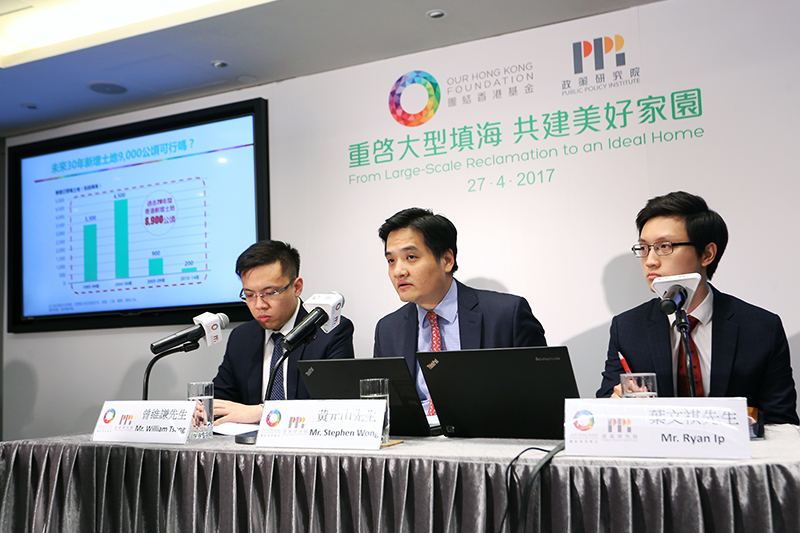
Home”, which proposes that the government restarts large-scale reclamation plans in Hong Kong to support different
development projects in the SAR, including releasing privately-owned land through a public-private cooperation model, to
tackle the problem of land and housing in Hong Kong.
The supply of public housing in Hong Kong is lagging far behind demand, with the average waiting time for public housing units now close to five years, falling short of the targeted three years. At the same time, the annual average number of private residential properties that completed construction in the last five years is 12,000 units, nearly 30% less than the supply target. OHKF expects that between 2017 to 2020, the annual average number of private properties completing construction will be 20,000 units (the forecast for 2017 is 16,000 units). Although this number represents a steep 85% increase from ten years ago, the increase in total gross floor area is only approximately 50%; in other words, the trend of the average residential unit becoming smaller is expected to continue.
OHKF expects that the actual demand for land in Hong Kong will increase substantially in the coming years due to population growth and improved living conditions for existing tenants. At the same time, building ageing is a serious problem in Hong Kong, and it is estimated that more than 600,000 units will need to be redeveloped. Taking into account the above factors, in the next 30 years, Hong Kong will accumulate a total demand of more than 1.26 million housing units. To raise Hong Kong’s per capita living area from the current 170 sq. ft. to a level closer to that of Singapore (270 sq. ft.), approximately 3,000 hectares of land will need to be made available, in addition to more than 6,000 hectares needed for additional facilities in these residential areas. The total area needed will be more than 9,000 hectares, equal to three times the size of the Shatin new town.
Nevertheless, the government’s current land supply initiatives fail to fulfil the above requirements. When taking into account all projects that have been completed and are being planned or under construction, some 5,300 hectares of land are involved, which still falls short of about 4,000 hectares based on the requirements above. In the face of such a pressing and enormous demand for land, Hong Kong must consider various ways to increase land supply.
Reclamation is an Effective Way to Increase Land Supply
As OHKF points out, reclamation has long been inseparable from the development of Hong Kong. Six large-scale new towns, including Tuen Mun, Tai Po, Tsuen Wan and Tseung Kwan O, have already accommodated one third of Hong Kong’s population. Unfortunately, no new town has been established in Hong Kong since 2000, and this is believed to be related to the virtual cessation of all reclamation projects in Hong Kong in the last few years.
Compared with neighbouring cities, Hong Kong’s reclamation ratio is noticeably lower. For instance, more than 20% of land in Singapore comes from reclamation, and the country is still actively conducting reclamation projects. Over 60 % of Macau’s total area is actually reclaimed land, whereas only 6% of Hong Kong’s area is reclaimed land. Between 2005 and 2013, only 92 hectares of land in Hong Kong was generated from reclamation, marking a 90% drop from the previous decade. It is estimated that land reclaimed for private housing in Hong Kong will soon be used up.
Stephen Wong, Deputy Executive Director and Head of Public Policy Institute of OHKF, said: “Solving housing problems requires far-sighted planning. We need to look beyond the supply for the coming two to three years, and develop long-term plans for at least ten years. Hong Kong’s medium and long term housing supply is lagging far behind target. Large-scale land development requires immediate action.”
To ensure continuous and stable land supply, as well as to build up land reserves in the long run, OHKF suggests that the government should restart large-scale reclamation plans. It proposes a number of reclamation sites and expansion plans, including the development of a large-scale artificial island at south of Cheung Chau; redeployment of prisons and government facilities to Po Toi Island; and reclamation and expansion in Tuen Mun, Tseung Kwan O and West Lamma. In addition, with reference to the situation in Singapore, it is worthy examining thoroughly the socio-economic significance of container terminals to Hong Kong and considering the direction for their long-term development.
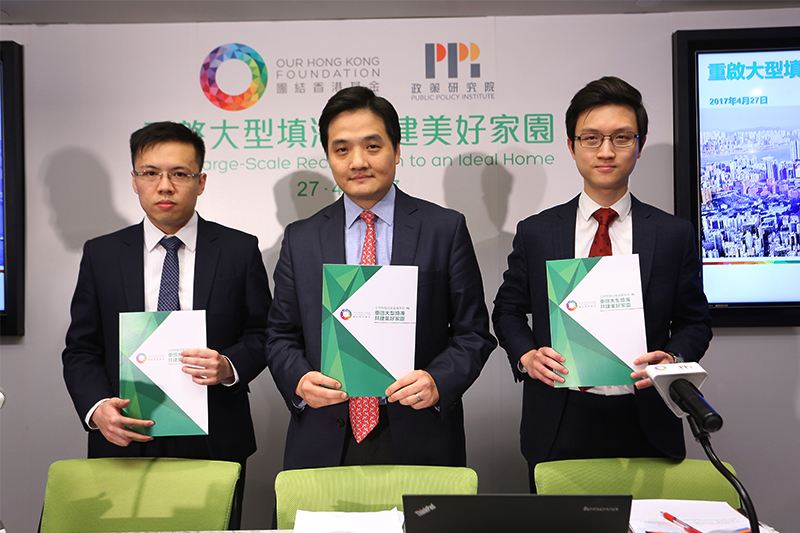
Public Policy Institute of OHKF; Ryan Ip, Researcher of OHKF.
OHKF suggests establishing new towns on these extensive reclaimed sites and building public housing based on the “Subsidised Homeownership Scheme,” proposed by OHKF, to tackle Hong Kong’s housing and homeownership issues in the long run. Professor Richard Wong, advisor to OHKF and Professor of Economics and Philip Wong Kennedy Wong Professor in Political Economy at the University of Hong Kong, said: “In the long run, the government should draw up a substantial reclamation plan as soon as possible so that long-term needs can be met. On the other hand, the government’s housing policies should not only focus on building additional units to deal with housing shortage. It must provide the public with homeownership opportunities, rather than just rental housing units.
Releasing Privately-Owned Land to Cope with Land Shortage in the Short to Medium-Term
Reclamation can solve Hong Kong’s land supply problems in the long run. As for the short to medium-term, the government should consider releasing privately-owned land reserve. Data shows a marked decrease in the residential units offered by private development and redevelopment projects in the recent years. OHKF suggests that the government should establish a mechanism to try to collaborate with private land owners and provide policy support for aspects such as urban planning and land premium payment. This in turn enables private land owners to launch residential projects within designated areas. In return, private land owners have to allocate a certain percentage of land to the government for developing subsidised sales flats.
